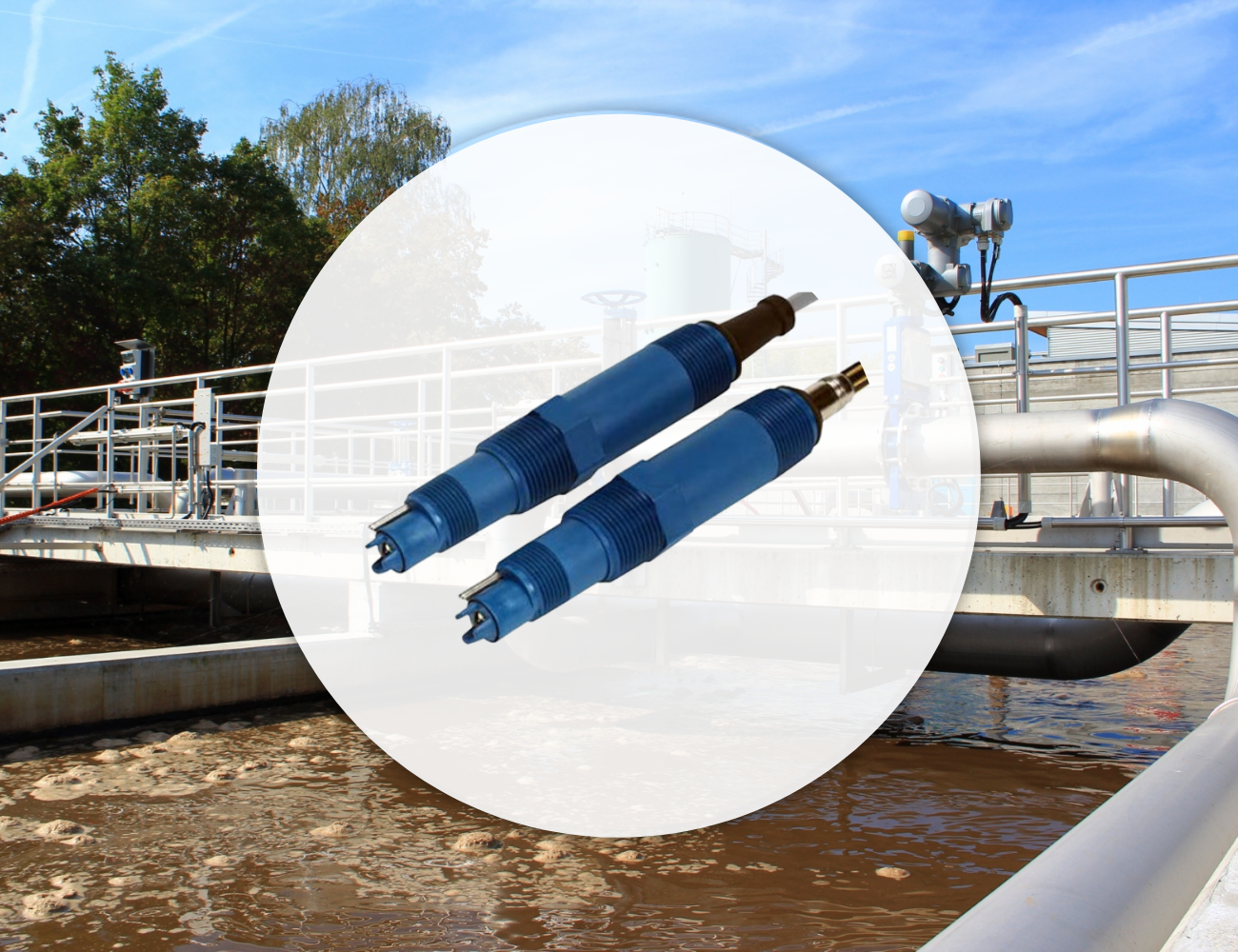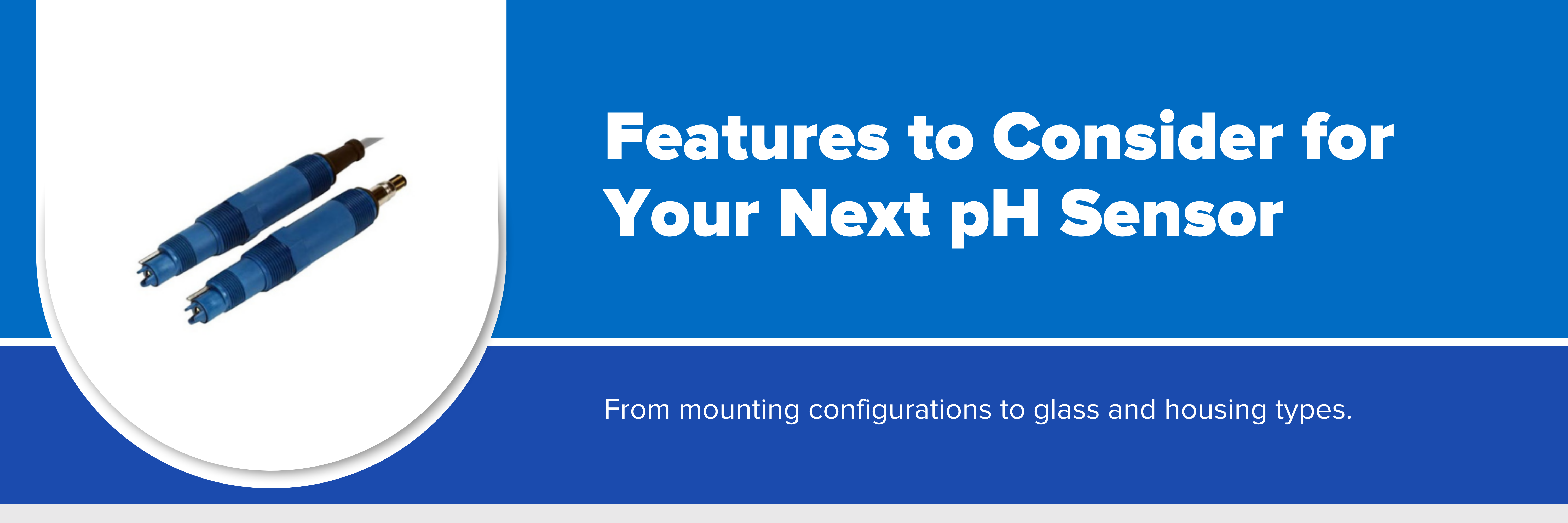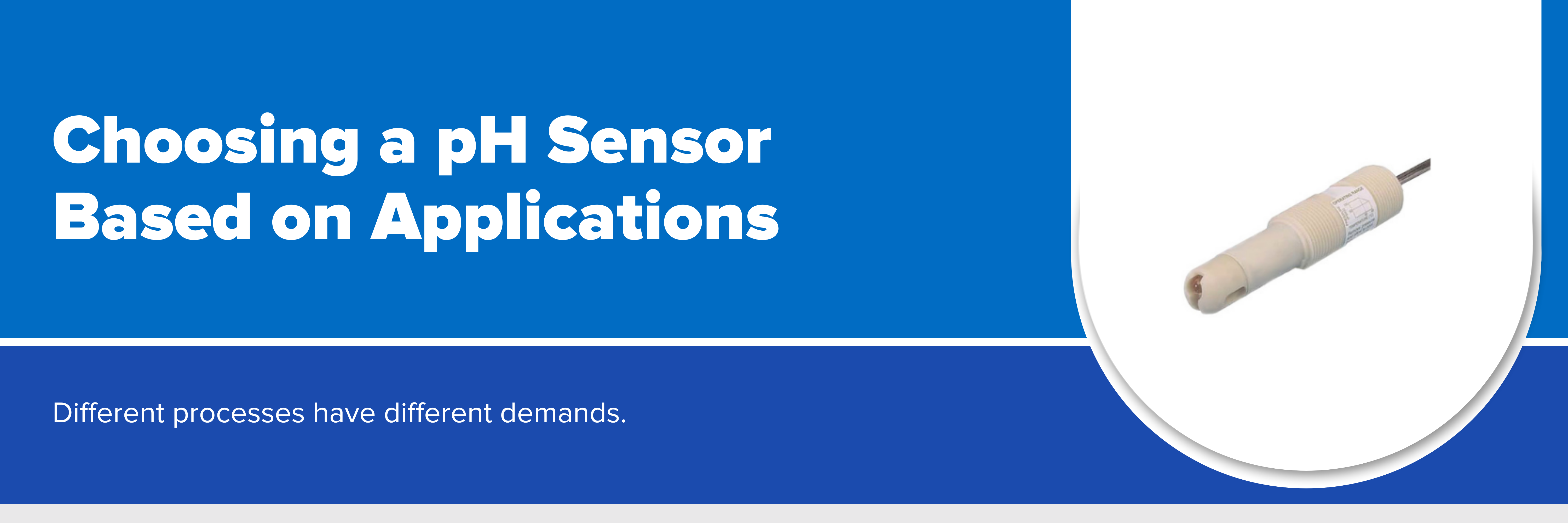How to Choose the Right pH/ORP Sensor for Your Water Quality System


Features & Technology to Consider for Your Next pH Sensor
There are countless options and brands to choose from when trying to find the right pH/ORP Sensor for your application. Without guidance from an expert who understands how the sensor will be used, this task can easily become overwhelming and confusing. And, assuming you’ve at least found the right type of pH/ORP sensor, there are many features that could help make your process safer or more efficient.
The first part of this post is dedicated to the technology and features that you should consider when choosing a pH Sensor, and then we will dive into the different types of sensors and what sorts of applications they best serve.

SMART-Enabled
- Allows the pH sensor to have a memory that holds calibration information so no calibration equipment needs to be brought out to the field. The sensors can be plugged right into the system to start measuring and be switched out with minimal downtime. This is advantageous for remote applications or multiple installations.

Junction Type for the Reference Cell
- Single junction electrodes are less expensive options that put the reference electrode cell in contact with the sample. If the application has conditions like high pressure, high temperature, high acidity, or high alkalinity, the reference electrode can become contaminated which leads to failure. This is known as sample ingress. Double junction electrodes have an inner and outer junction which isolates the reference electrode cell. This minimizes contamination even if sample ingress were to happen, making it conducive for samples that contain heavy metals. Triple junction electrodes further isolate the reference electrode cell, allowing for reliability and accuracy even with harsh samples.
- The material of the junction itself is also important. Some materials like Polytetrafluoroethylene (PTFE) are hydrophobic and provide chemical resistance, thereby preventing contamination or clogging that leads to unreliable readings.

Housing & Glass Type
- The housing for the pH sensor should be strong, chemically resistant, and prevent leakage or humidity problems. Polyphenylene Sulfide (PPS) is an option that achieves these goals. Similarly, the glass of a pH sensor can be built to resist cracking, reduce sodium ion errors, and increase longevity. As always, it’s important to check the manufacturer’s specifications or talk with a knowledgeable engineer to be sure of what material is needed for your application.

Mounting Configurations & Accessories
There are many different types of pH sensor fittings and accessories that fit different types of applications. While this list is not exhaustive, it is a good reference for determining which mounting configuration is best for your pH/ORP sensor’s application.
-
Insertion or Submersion - Using front-facing threads, insertion probes are used when measuring pH in flowing pipes. Using rear-facing threads, many of the probes can be submerged in a tank.
-
Retractable - usually installed in a ball valve that still allows sensor recalibration without shutting down your process.
-
Quik-Lok - Uses a compression style fitting which allows for quick installation and removal. It also enables variable insertion depths for installation.
- Low Flow Cell - takes a small continuous sample allowing you to control the flow across the sensor and maintain the highest precision possible.
-
Refillable / Rebuildable - Allows you to refresh the electrolyte solution which gives the same probe a longer life. This is also helpful for special applications because special electrolytes can also be used. The electrolyte options for pH/ORP sensors are:
- High Temperature - most suitable for use in highly acidic, basic, or oxidative solutions, and high-temperature applications.
- Bio-Film Resistant - inhibits the growth of bacteria and algae.
- Poisoning Resistant - most suitable for use in processes containing sulfides, mercaptans, and cyanides.
- Oil Resistant - aimed for use in applications where light oils and greases can foul a sensor.
- Scaling Resistant - targets applications where the precipitation of calcium magnesium salts like gypsum or water hardness coat over the electrode.
- Metal Resistant - most suitable for use in applications where chloride in the reference electrolyte would react with the process.

Choosing a pH/ORP Sensor Based on Your Application
With an idea of what features or technology should be considered for your next pH sensor, a more informed decision can be made when shopping for a sensor based on the process or application. Manufacturers will design sensors with particular applications in mind. A more simple application may only need a single junction electrode, whereas a harsh environment with contaminants may need a double or triple junction electrode. Rosemount Analytical is one example of a manufacturer that does this. As we explore different applications, we will use different Rosemount Analytical pH Sensors for the sake of consistency.

General Purpose, Non-Coating pH Sensors
Sometimes a sensor designed for a special application isn’t necessary. General-purpose pH Sensors, like the Rosemount Analytical Model 3900 pH/ORP Sensor, are known for versatility and customizability. The Rosemount 3900 is SMART-enabled, has multiple options for glass type, and can be mounted in various configurations. With a double or triple junction reference cell, and a sealed PPS body, the 3900 is still a very durable option for most industries and applications. For processes that require higher performance or need to meet a specific need, keep reading below.

Non-Coating with Possible Poisoning pH Sensors
Some processes contain contaminates like sugar, ammonia, chloride, or sulfides, which can require a special kind of pH Sensor. Chemical or wastewater processing, pulp and paper, and mineral refining are a few examples of processes where these contaminants are present. One example of a pH sensor built for these sorts of processes is the Rosemount Analytical Model 385+ pH / ORP Sensor. It works with retractable mounting configurations, is SMART-enabled when used with an Analyzer or Transmitter, and utilizes triple-junction technology. The Rosemount Analytical Model 389 pH / ORP Sensor is a different model that works with insertion mounting configurations and is considered a combination sensor (pH, reference, and temperature).

Sanitary, Steam Sterilizable pH Sensors
Many industries need pH sensors for their ultra-clean steam-in-place (SIP) and clean-in-place (CIP) processes. The Rosemount Analytical Model Hx338+ pH Sensor is built with a unique Tri-Triple reference technology and can be used with insertion or retractable sensor mounting assemblies. Three separate peripheral liquid junctions make contact with the solution and two inner junctions protect the reference. The first junction eliminates flow sensitivity and maintains a steady reference signal. This technology fights poisoning ions even after numerous sterilization cycles, which makes it applicable for industries like biotechnology, pharmaceutical, and food processing.

Heavy-Duty Industry pH Sensors
Applications like mining or chemical/oil refining that use a viscous coating need a heavy-duty pH sensor that offers more durability. Rosemount Analytical designed their TUpH line of pH and ORP sensors for this reason. The Rosemount Analytical Model TUpH 396R / 396RVP pH/ORP Sensor is known for easy sensor removal, works with retractable mounting configurations, and has a titanium tube with EPDM seals. For those who need a pH sensor designed for insertion or submersion mounting, there is the Rosemount Analytical Model TUpH 398 / 398VP pH/ORP Sensor which is also housed in a titanium tube. For easy installation or removal, the Rosemount Analytical Model TUpH 397 pH Sensor utilizes Quik-Lok technology for easy installation and removal for cleaning. The compression fitting of the Quik-Lok means that you don’t have to spin the actual probe for installation or removal and you can avoid twisting the wire.

Low-Conductivity pH Sensors
For applications that have low conductivity like in boiler feed water, Rosemount designed the SQP10077-LQD Low Flow Panel (now replaced with part number 00390-7101-001) which enables the Model 3900 ph/ORP Sensor to work with inlet flow of 3-80gph and inlet pressures of 3-65psig. By controlling the flow across the sensing element, you control the fluctuations of the pH readings. This is especially important in low conductivity applications when there are few ions that come in contact with the pH glass and junction.

High-Temperature & High-Pressure pH Sensors
Processes requiring high performance (oil refining, chemical, pulp and paper, water and wastewater, metals and mining) often operate in high temperatures and pressures that can cause deterioration of the glass membrane, quicker depletion of the reference electrolyte, and increased stress on other sensor components. Rosemount designed their PERpH-X pH / ORP sensors to combat this additional stress on the sensors.
The Rosemount Analytical Model 3300HT / 3300HTVP ph/ORP Sensors work with Insertion or submersion (refillable) mounting configurations and are specially designed to handle these harsh conditions. Additionally, the enhanced double-junction reference is chemically resistant and has a larger surface area which allows for a more steady reference signal in dirty or oily applications.
For applications that require a retractable (refillable) mounting configuration, the Rosemount Analytical Model Model 3400HT ph/ORP Sensor is another option that is housed in a titanium tube for added durability. Or, for applications that use insertion or submersion mounting, the Rosemount Analytical Model 3500 pH/ORP Sensor is a different pH / ORP sensor that utilizes many of the same PERpH-X features.

Special Use pH Sensors
Some applications like those that contain hydrofluoric acid (HF) require a different type of glass than other applications due to HF’s ability to attack the silicon-oxygen bonds that hold the glass matrix together. For insertion or submersion mounting configurations, the Rosemount Analytical Model TF396 pH Sensor has a glass-free design which also allows for less frequent calibration due to the sensor’s stability. Without a glass bulb, this allows for a wider range of applications that the sensor can be used for. Rosemount also has specially-formulated glass for the Model 372 pH Sensor which can reduce HF attack by more than a factor of ten.

Ready to Purchase a pH Sensor?
Overall, there is a lot of information to sort out to make sure the pH sensor life is maximized, the most precise measurements are being taken consistently, and the lifetime cost of ownership is minimized. If you have specific questions about what pH sensor is needed for your application, call or chat our applications engineers today.
If this post still leaves you wondering what type of industrial instrumentation would work best for your application, our engineers would be happy to help you. Give them a call at 1-800-884-4967. Or, you can shop for a wide range of industrial instrumentation from top brands and even configure your product online. We offer free lifetime tech support with every product sold.
